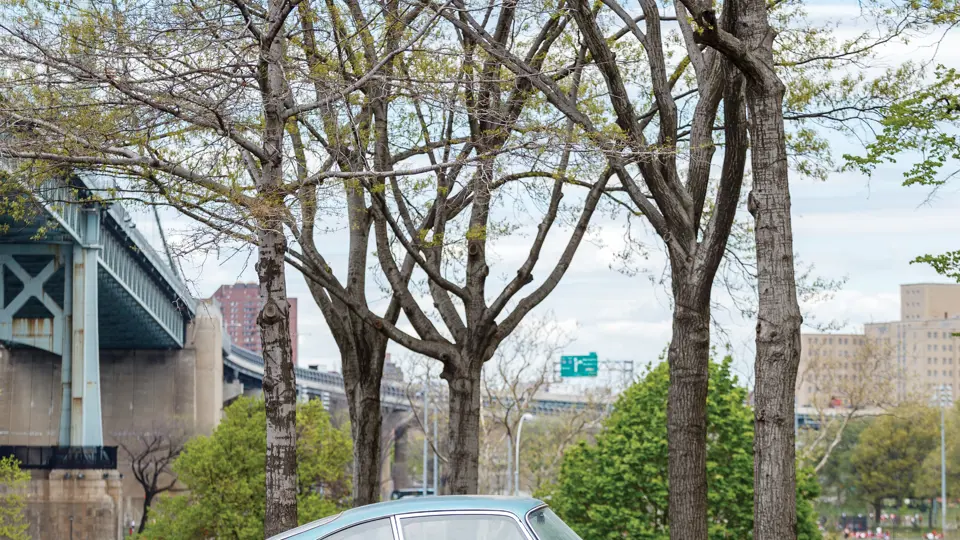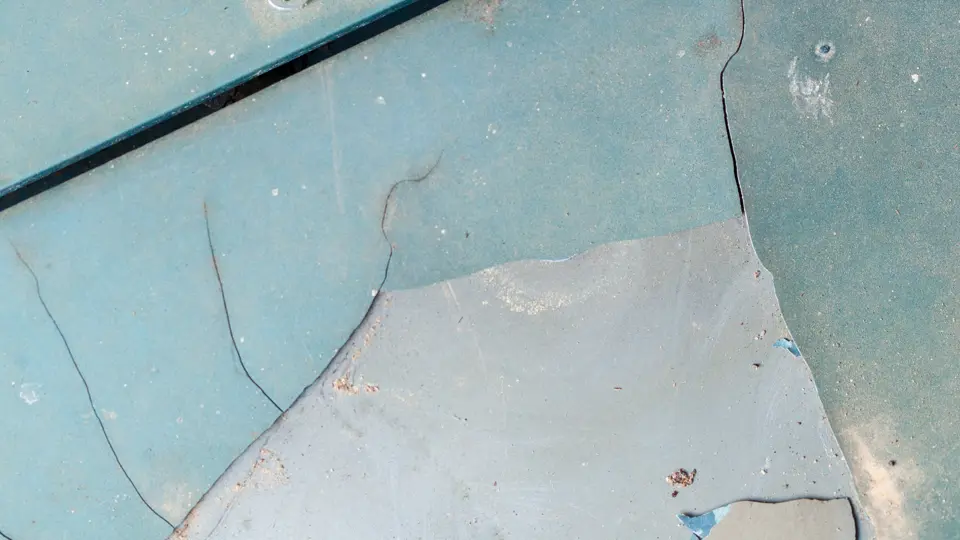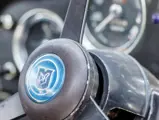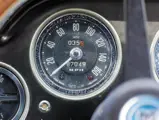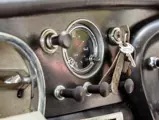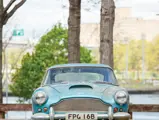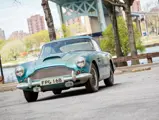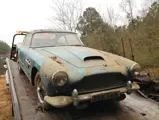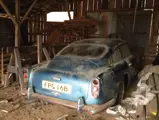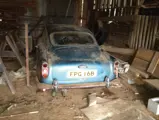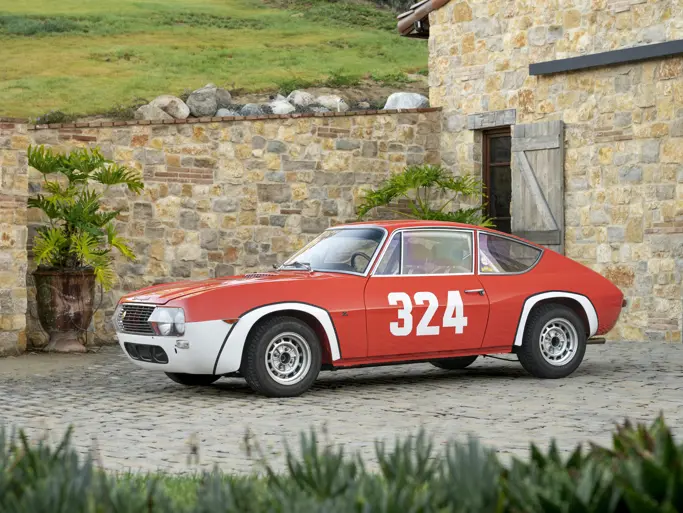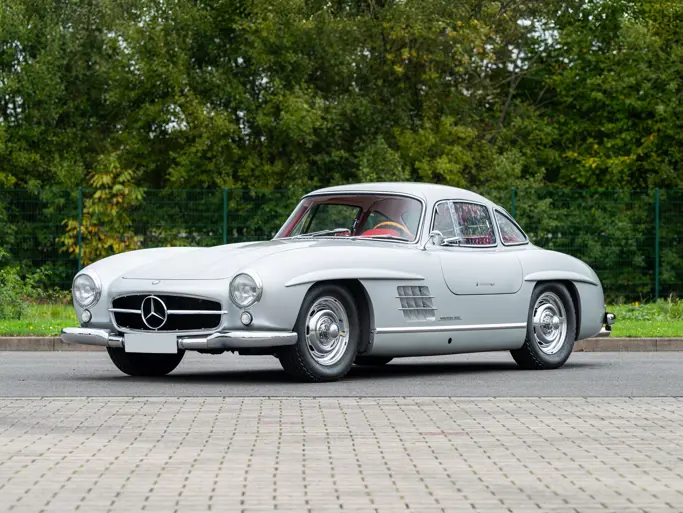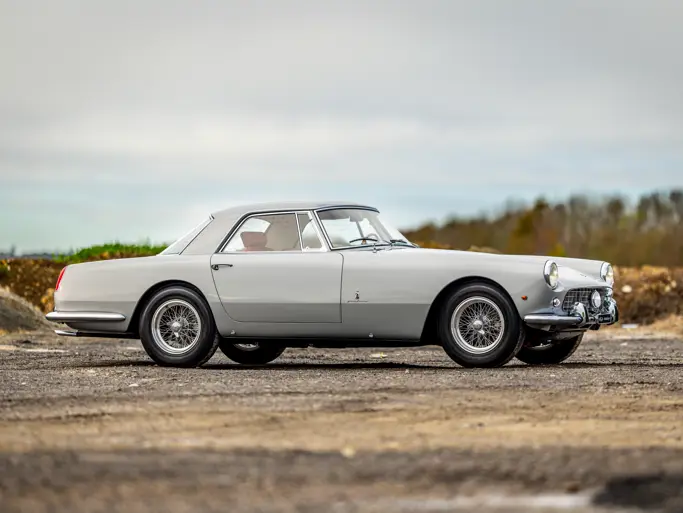240 bhp, 3,670 cc DOHC alloy inline six-cylinder engine with dual HD/8 carburetors, four-speed manual transmission, independent front suspension with upper and lower control arms and coil springs, live rear axle with Watt linkage, trailing arms, and coil springs, and four-wheel disc brakes. Wheelbase: 98 in.
It is easy to forget just how large a statement the Aston Martin DB4 made upon its introduction at the 1958 London Motor Show. In many ways, it was the car that told the world that the British motor industry was back. A small British manufacturer had produced a wholly new, wholly modern grand tourer. Its rigid box-frame chassis, developed under Harold Beach, featured a coil-over A-arm front suspension with an anti-sway bar and a live rear axle with trailing arms, a proper Watts linkage, and, of course, coil springs. The coachwork was styled in Italy by Carrozzeria Touring, which used their patented Superleggera process to create a skeleton of small-diameter steel tubing to support body panels made of light alloy. Yet, its sleek fastback lines were hammered out by Aston’s own highly skilled panel-beaters in Newport Pagnell.
At the heart of it all was the new DB4 engine, a rugged alloy six-cylinder twin-cam unit that was designed by a recently hired master engineer, the Czech-born Tadek Marek. Marek’s name would become legend to Aston enthusiasts, and this, his original creation for the company, would power a decade of DBs. The lightweight alloy-cased, four-speed synchromesh gearbox was also an in-house design, built by David Brown’s gear and machine tool division. Four-wheel disc brakes provided immediate stopping power, and they were considered innovative technology on production GTs of the day.
The original DB4 Astons were effortlessly modern and breezily international, and they hit the sweet spot between Crown and Continent. In its October 3, 1958, issue, Autocar explained, “When the products which are raced bear such a close resemblance to those which can be bought by the public, only the most biased can deny the value of racing in improving the breed. It is no surprise that the DB4 is based on an engine which first appeared in the DBR2 in some of last year’s races.”
THE CASTROL LTD. DB4
This DB4, chassis number DB4/718/R, was delivered on July 27, 1961, through agent C. Williams, as recorded on the Aston Martin factory build sheet. The same sheet notes that the car was outfitted with Smiths instruments in mph, a heated backlight, two Marchal fog lamps, and a Motorola 818 radio, and it was finished in the body color of Snow Shadow Grey over Dark Blue Connolly trim. During its quarter-century in England, the car was registered as 7727 JW.
Interestingly, the “JW” refers to John Windridge, a senior director of Castrol Limited. Of course, the name Castrol needs absolutely no introduction to even the casual vintage racing enthusiast. It is the motor oil that was employed in virtually every European fast tourer of this era, with Aston Martin certainly being no exception. In fact, in 1960, Aston Martin and Castrol had entered into a sponsorship relationship with one another. According to Tony Bonner, a former Castrol chauffeur, the oil company decided that it would be appropriate to keep a DB4 in the company fleet, and so this car was acquired for Windridge by Castrol as an “executive car.” It was delivered directly to Castrol House, the company’s recently completed and strikingly modern headquarters building on Marylebone Road in Westminster, as is documented on factory records.
Factory service records seem to indicate extensive use of the car in its first few years, with factory maintenance continuing in the ownership of the second caretaker, Ronald Rawden, an active British enthusiast who in five decades of connoisseurship also enjoyed numerous Jaguars, BMWs, and, indeed, other Astons. Mr. Rawden later recalled, “I found the DB4 in a garage in Woodford, Essex. It was a thrilling experience driving it home for the first time, not found with many other cars. After many years, the car needed an overhaul, and I decided to do the work mostly myself. I took the engine completely out of the car and stripped it down to the last nut and bolt. I was in constant touch with the service department at Aston Martin in Newport Pagnell, who gave me all the information and spare parts required.” The Aston was registered in his ownership as 1 EXL.
The factory’s last servicing of the car occurred in late 1969 and early 1970, while in the ownership of Mr. Sudbury, of Suffolk, who acquired the car with 21,589 miles on its odometer in September 1969 and commissioned a full road inspection and new battery. The last note on the factory records is a handwritten comment indicating the car’s acquisition on August 30, 1985, by K.W. Robbins, Esq., of Madrid, Spain.
It is believed that not long after, the car was escorted to a new home in the United States. It was acquired by a gentleman in Mississippi, in whose ownership it remained hidden from sight before emerging recently as a literal “barn find.” Today, it presents as the ideal basis for a restoration, with Mr. Rawden’s work undone by time and age. It still wears its repaint in Caribbean Blue from the 1960s, and while the interior and trim are largely complete, they, along with the rest of the car, require a full restoration. The car does not presently run and drive.
This car is ready to be freshly restored and happily returned to the road, and it represents a rare opportunity to acquire a DB4 that has been out of sight, and even out of mind, for nearly a quarter century.

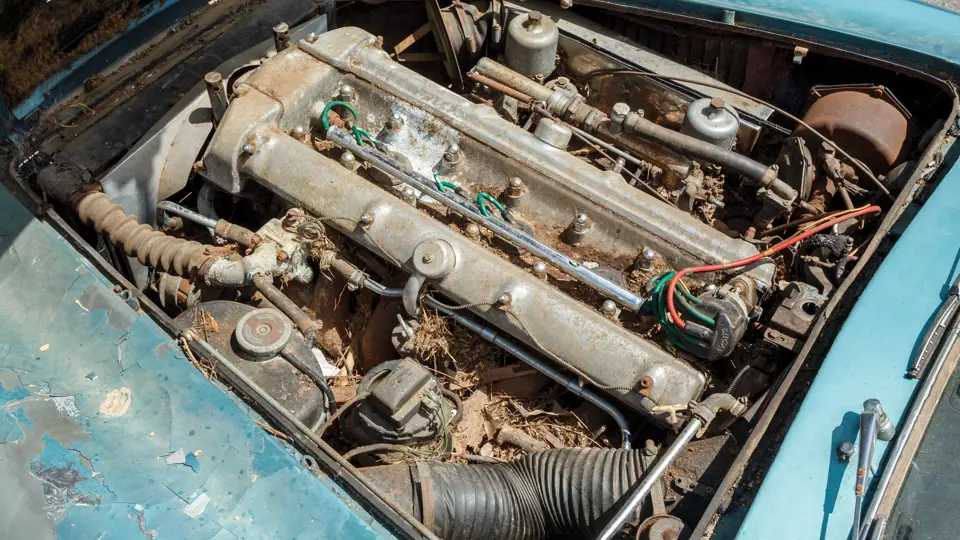


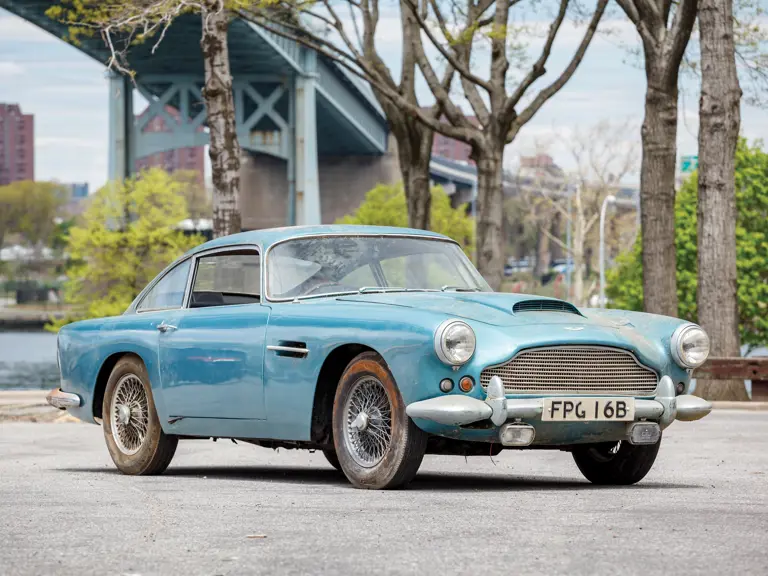
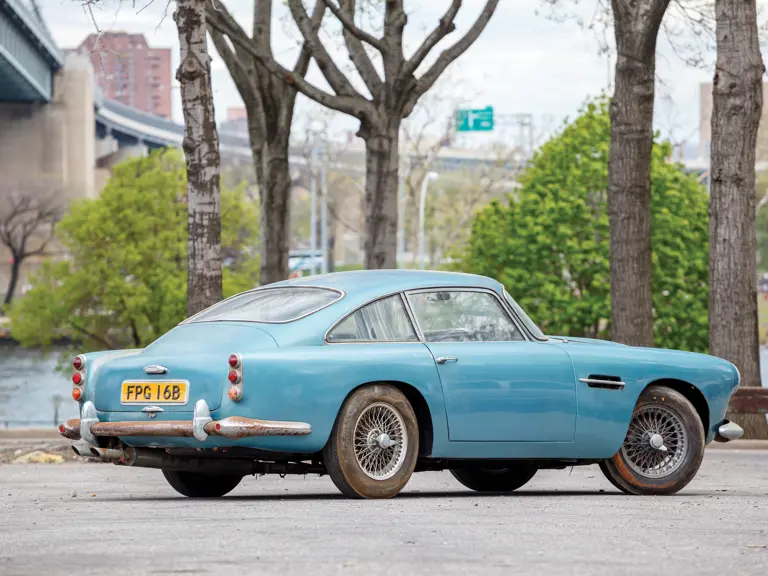
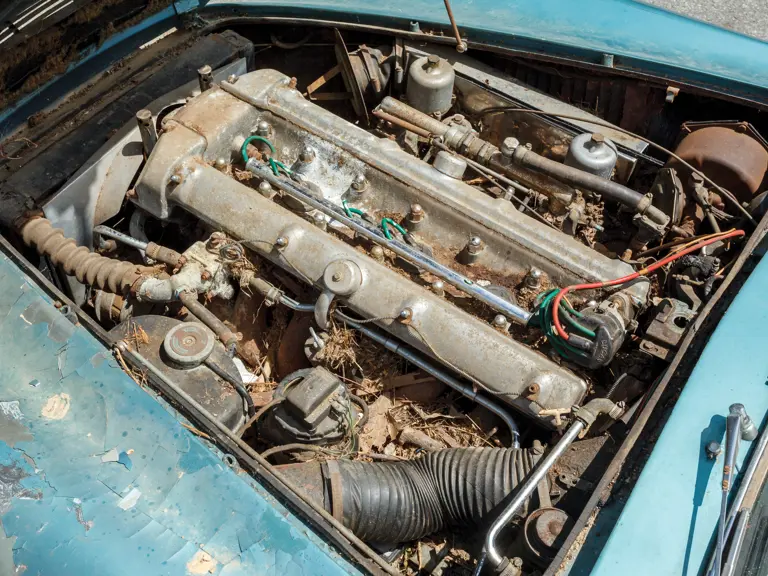
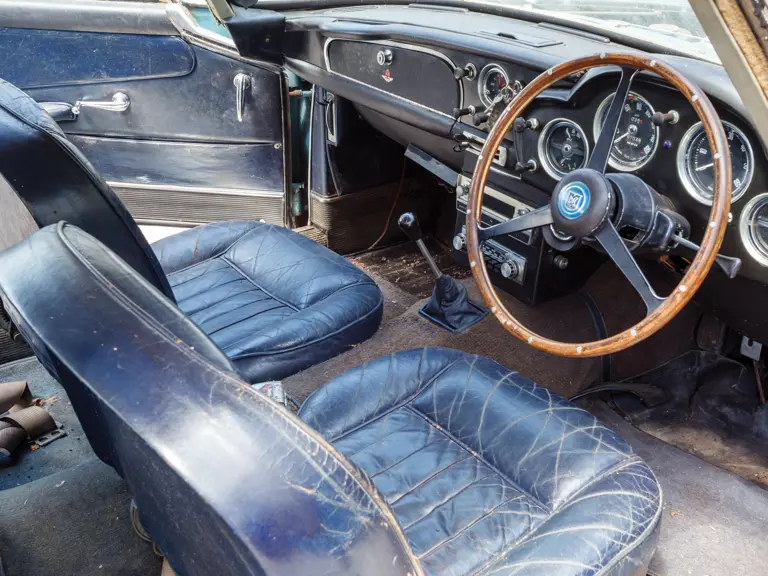

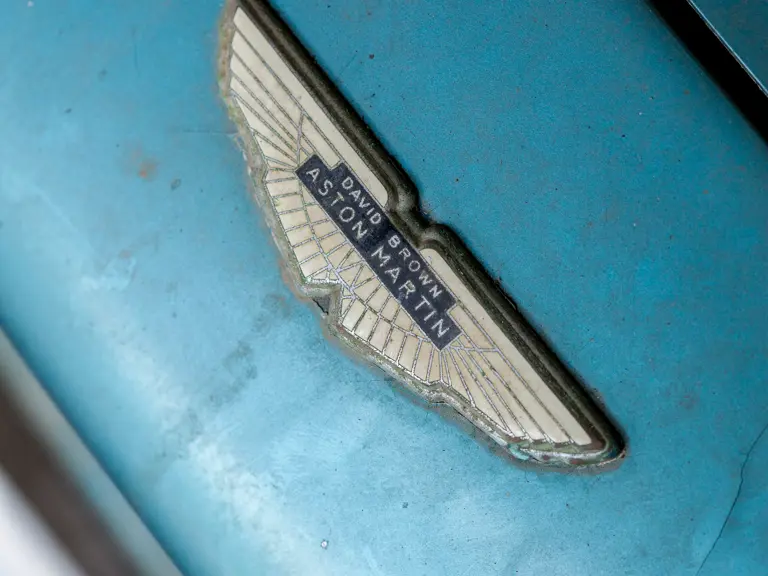

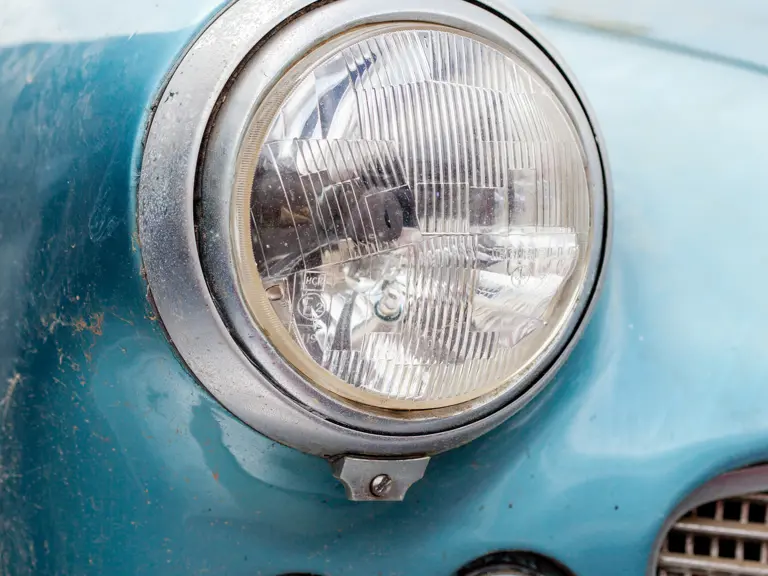
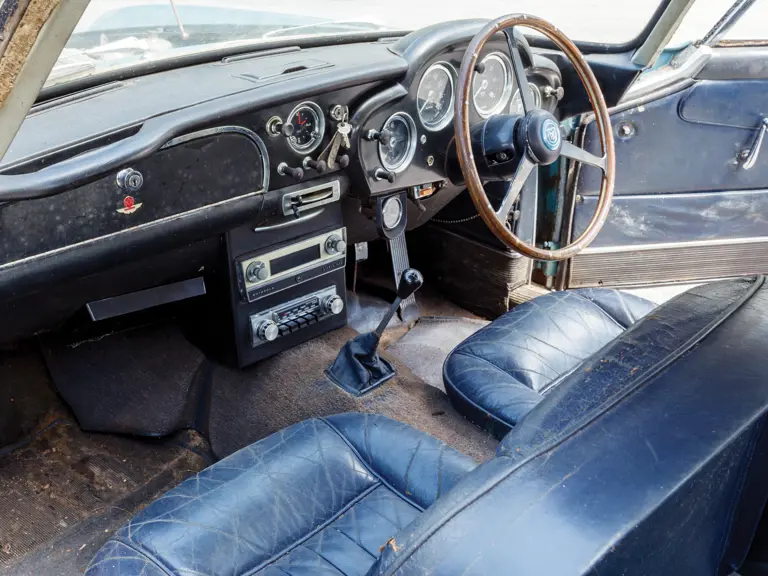

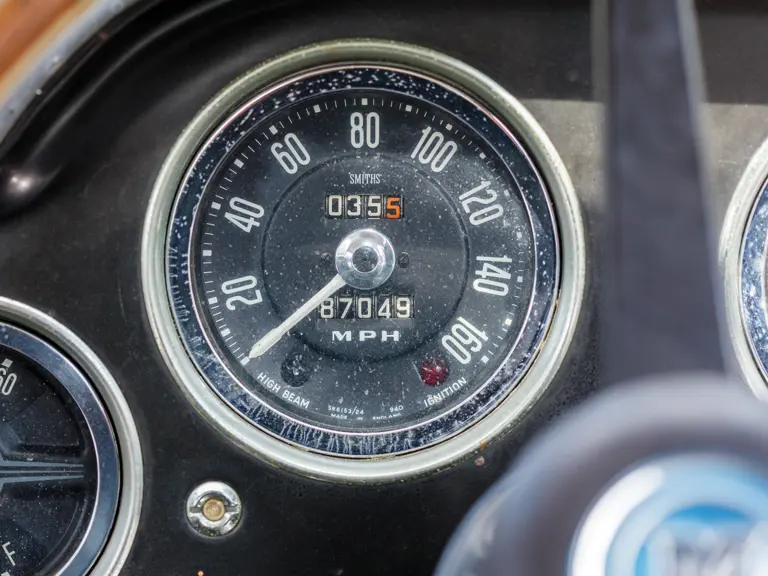
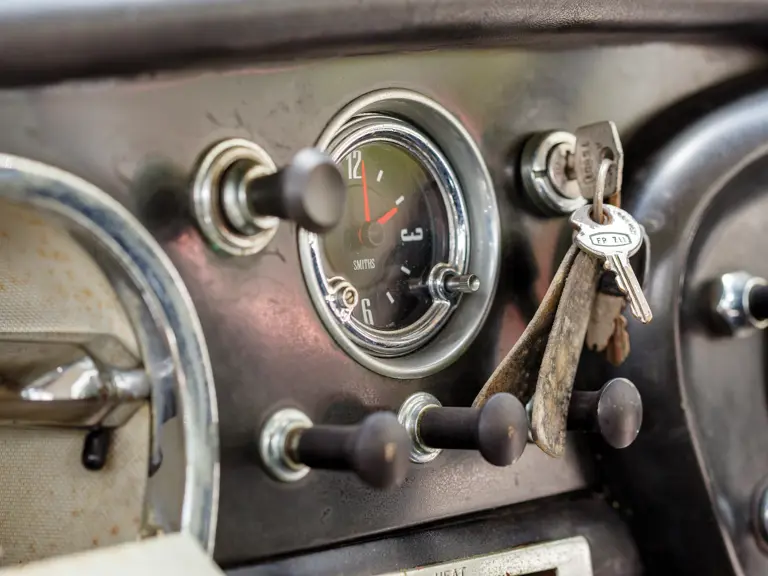

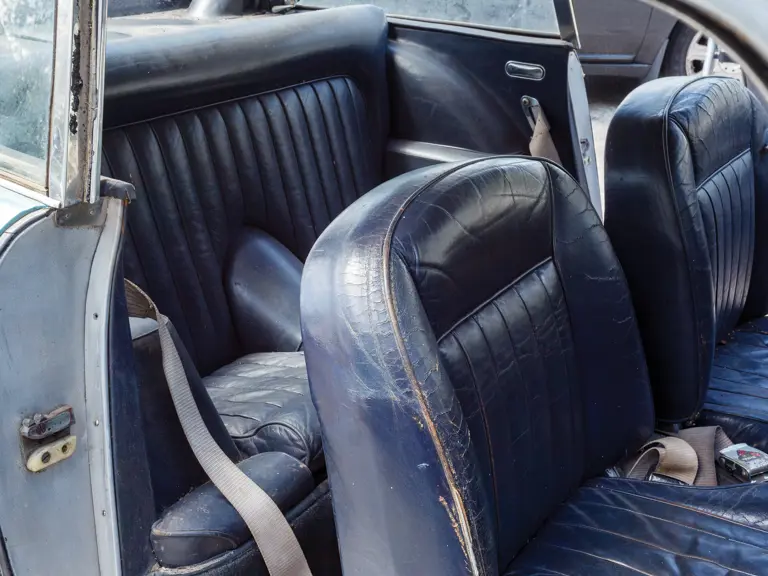

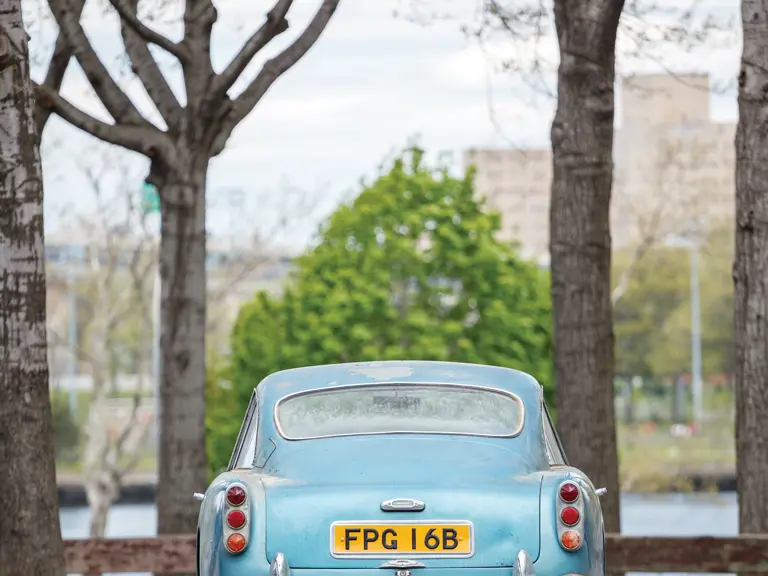
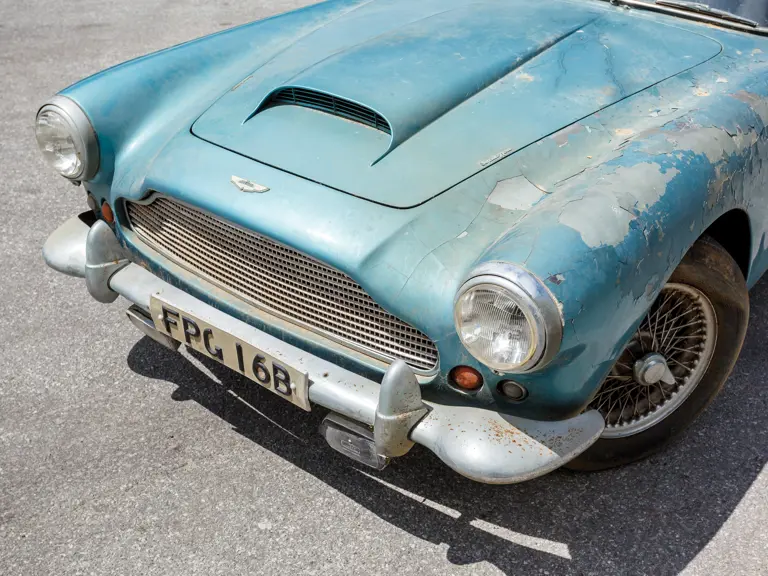
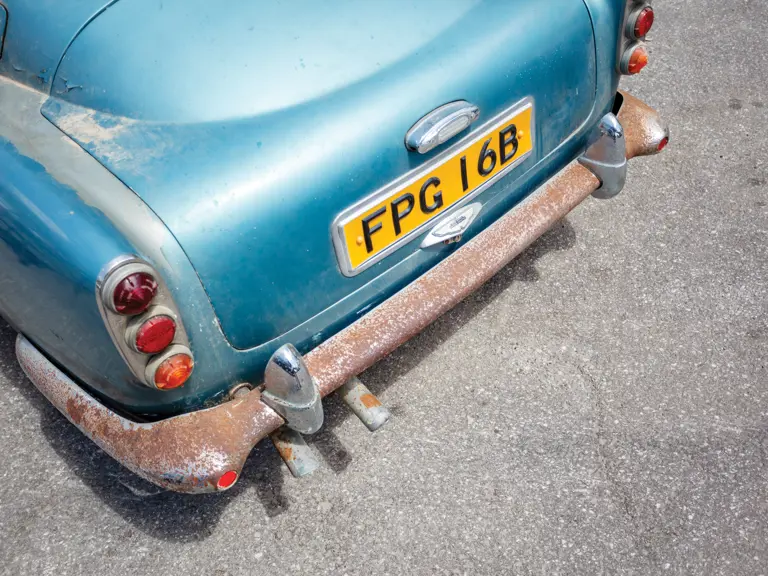
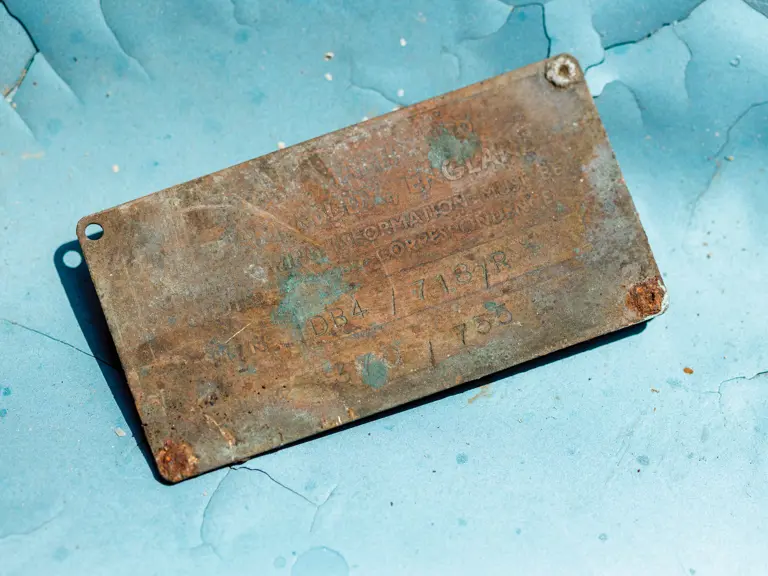


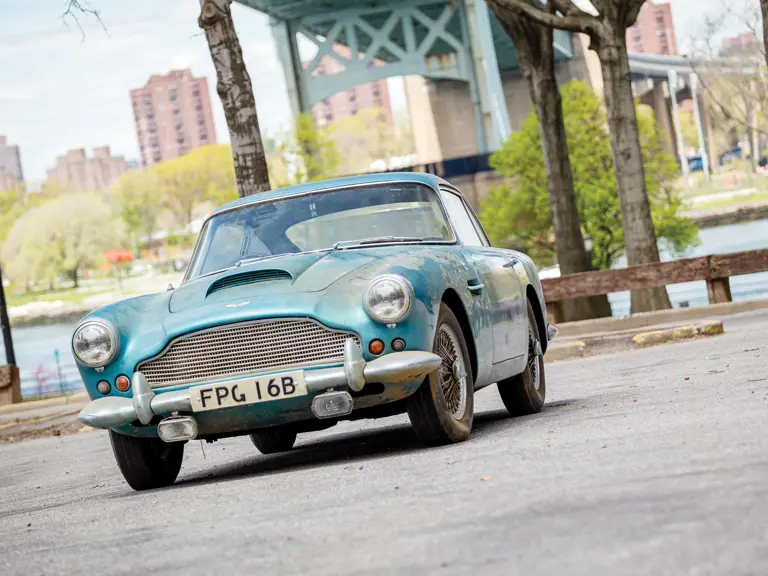
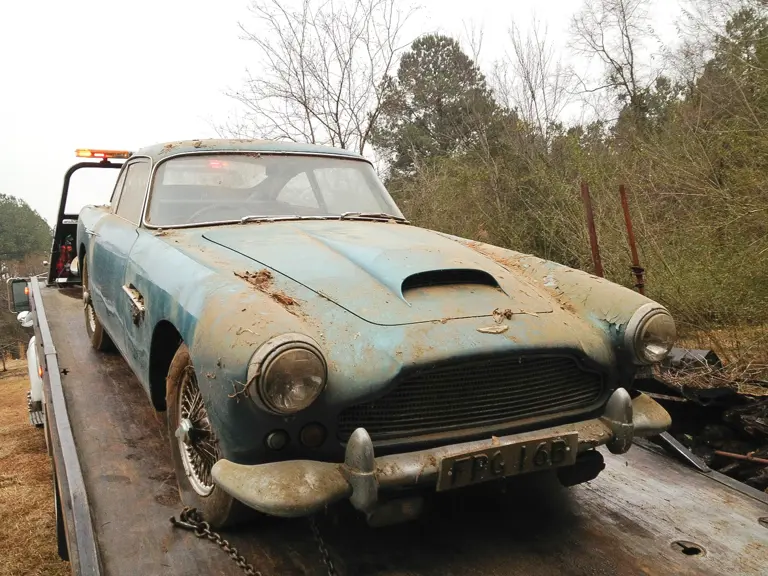
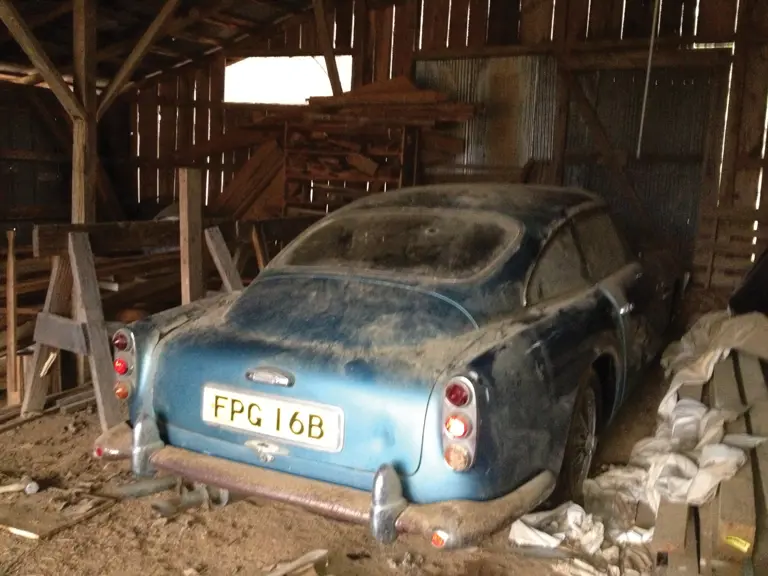
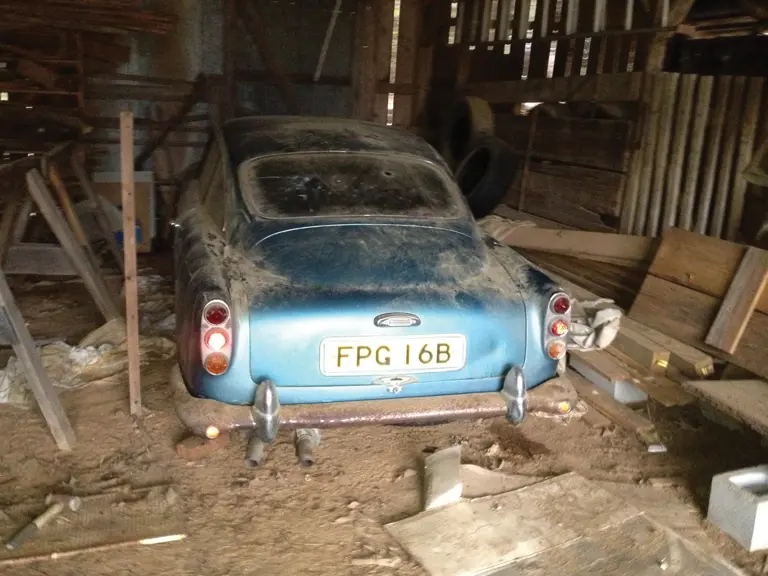
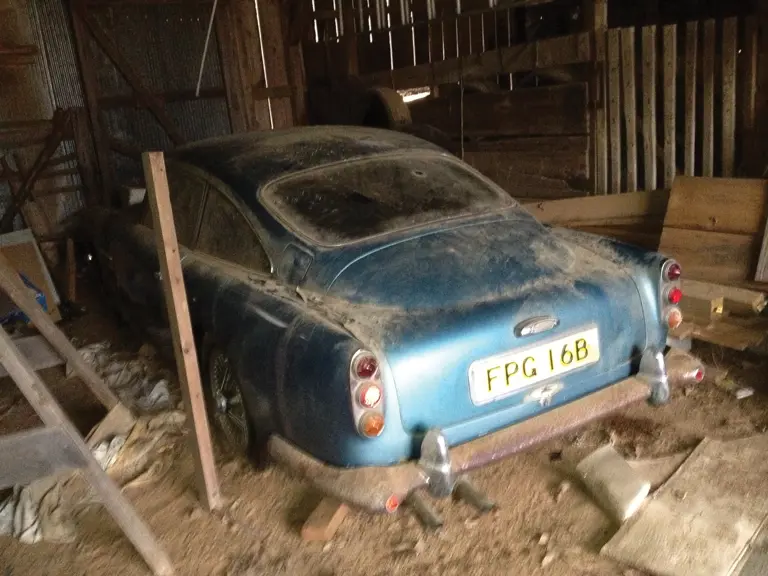
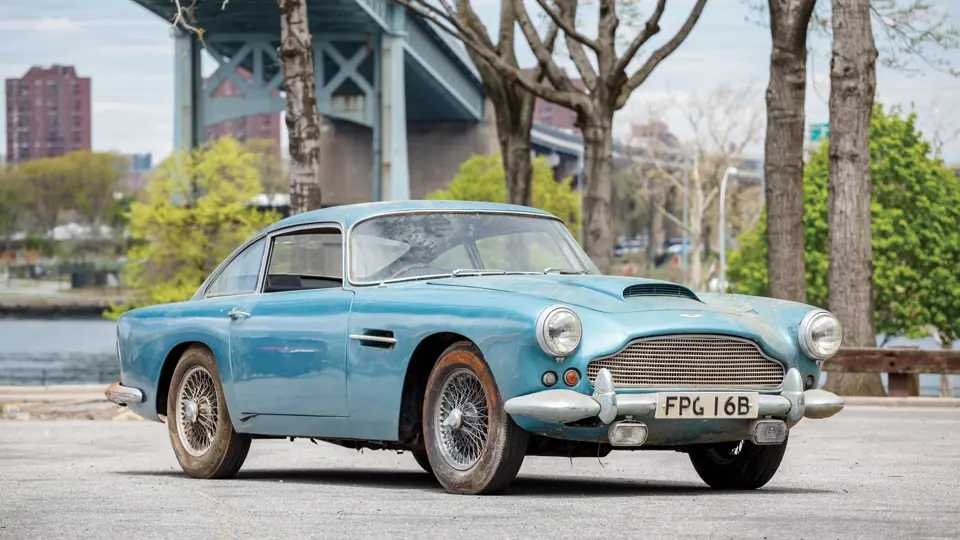
 | Monterey, California
| Monterey, California
